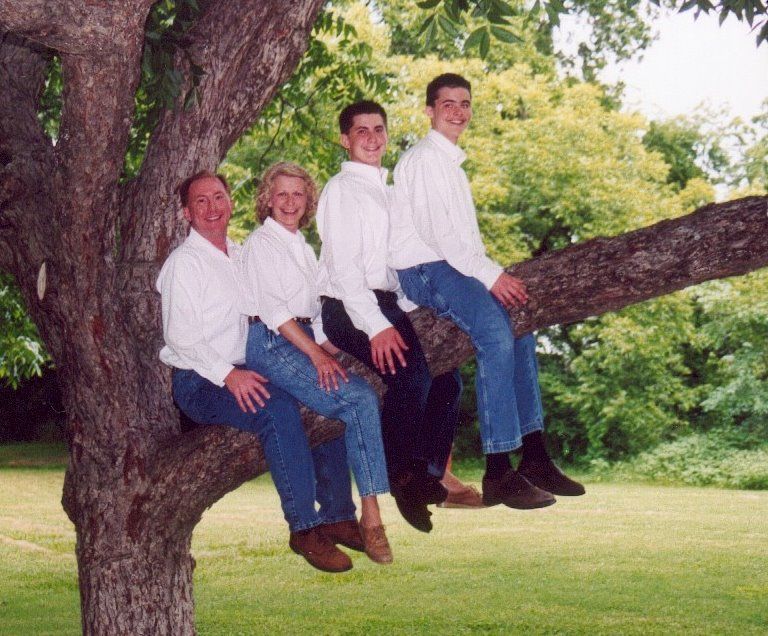Dysfunctional Families Have This One Thing In Common
They love to pretend.
Dysfunctional families tend to have one thing in common: they pretend.
They pretend they don’t feel it. They refuse to talk about it, and they refuse to change. Anyone who tries to bring the skeletons out of the closet is labeled “crazy” or “negative.”
So, the members have two choices:
1. Continue to play a role in the dysfunction and keep the fake “peace.”
2. Be the change the system needs and possibly risk abandonment or isolation.

How Families Pretend
Dysfunctional families like to operate under the belief that “everything is fine” despite evidence otherwise. If you bring up a complaint or issue, members of the family who want to maintain the status quo may deny what you’re experiencing in a few key ways:
- Minimizing. “That wasn’t that bad! You’re always so dramatic.”
- Ignoring. They may not respond verbally to complaints or leave text messages and emails unanswered. Any discussion of the “problem” is met with silence.
- Excusing. “Your dad threw that plate at the wall because he was so tired! We need to be more appreciative of how hard he’s working.”
- Happy endings. “Everything is going to be fine! You’re always talking about problems.”
These responses all have one thing in common: they seek to suppress the complaint and absolve the family of any responsibility to feel or fix.
Dysfunctional families each have their own expression of everything being “fine.” This is called family homeostasis. Family homeostasis doesn’t necessarily mean that everything is “great” it just means that everything is the way it always has been. It’s the way a family has learned to operate over time.
Families will do anything they can to maintain homeostasis or to keep the same status. This means that every family member plays a specific role in keeping the family as it is. Family dysfunction continues when everyone knows and plays their role. A problem cannot continue without buy-in from the members.
What’s interesting about this is people do not always know they’re playing a role. They may even hate or resent the role they’re playing. This also does not mean that everything is everyone’s “fault.” Many children play important roles in maintaining family dysfunction without their consent or knowledge. Some of these children are simply trying to stay alive.

Researchers believe that there are six roles that family members take on to maintain dysfunctional homeostasis.
(Note: Not every role will be observed in every family, and one member can play multiple roles or alternate roles with different people).
- The Focus (people call it the addict, but I prefer to use focus) is the person with the “problem.” The family works hard to help, enable, or cover it up.
- The Caretaker is the family martyr and tries to save everyone from the dysfunction, simultaneously maintaining it.
- The Hero tries to cover up the mistakes and make the family look normal. This is the “golden child.”
- The Scapegoat is seen as the problem child. Their negative actions distract from the focus’ behavior.
- The Mascot tried to decrease stress with humor. They feel powerless.
- The Lost Child quietly flies under the radar while other family members deal with the problem. They stay out of the way and may cut off interactions completely.
I’ll walk you through an example. Let’s say there is a family with six members: Mom, Dad, and four children. Dad has a temper and tends to yell and throw things when he is upset. Mom steps in and tries to calm him and make sure everything is perfect so he doesn’t snap. Dad is the focus, and Mom is the caretaker. The oldest child gets straight A’s and has a lot of friends in the community. They are the Hero, and the parents often refer to them as their “success story.” The second child has had some issues with addiction and is constantly getting in trouble at school. Dad is extremely focused on this behavior and gets very upset with this child - his anger often comes out in these moments. Everyone is always talking about how this child needs to get their life together; this would make dad less angry. After Dad gets angry and yells, the third child makes a lot of jokes about it and pokes fun at his Dad’s temper. The fourth child is quiet and tries to spend a lot of time in their room to avoid the chaos.
It might be tempting to say, “If dad just stopped getting angry and the second child got over their addiction, our family would be perfect,” but this is what this family needs to change:
- If the focus prioritizes their healing, things will have to change.
- If the caretaker stops enabling, things will have to change.
- If the hero stops covering it up, things will have to change.
- If the scapegoat stops taking the blame, things will have to change.
- If the mascot calls it what it is, things will have to change.
- If the lost child shares their feelings, things will have to change.
And when things start to shift, it will likely be chaos. It will be painful and hard. Even if things weren’t good before, you still may want to slip back into those roles. Sit through the transition. This is the only way to bring change.
Why Families Pretend
Each family system has a set of beliefs that make them who they are. You may have heard your family member say things like, “Goodmans are strong!” or “We don’t cry in this family!” As a young child, you internalize these beliefs and interpret them as rules for membership: If you are going to be a Goodman, you need to be strong, and you better not cry.
For children, the family is their entire world. Children learn they need adults to provide protection, food, and shelter. They know they can't survive alone. Because of this, children see no other option than to accommodate and learn to live with the chaotic, unstable, unpredictable, and unhealthy behaviors. It's a survival strategy.
We may attempt to call out dysfunction early in life and quickly learn that our feelings or interpretations will be denied, not taken seriously, or brushed under the rug. We may also learn that when people bring up issues, they are met with violence or another type of punishment. Pretending will be seen as the safer, easier, preferable option.
Many families will interpret their denial as strength or resilience. In the face of dysfunction, they may say things like,
- We don’t have time for all that feelings stuff!
- That’s just how we are.
- We’re a happy family!
- Stop all the whining.
- Toughen up. You’re never going to get through life like that.
This is not strength. True resilience comes from being able to name a problem and figuring out how to overcome it. The family cannot become more resilient through denial.
Pretending Doesn’t Work
I mastered the art of pretending at a young age. It became apparent that there were “good” and “bad” feelings. It didn’t matter what was going on in life; you got dressed, smiled, and got the job done. If someone hurt you and you tried to bring that up, you were being “negative.” As long as everyone believed you were happy, you were happy.

So many of us get stuck in this trap. We’re trying to look happy on social media before we actually address how we feel inside. When people ask us how we’re feeling, we lie and say, “Great!” with a forced smile. We pretend because we think it’s what we have to do. We’re terrified of what will happen if we stop pretending. Will I scare them away? Will they be able to handle how I really feel? Best not to risk it, right? Looking back, I spent so much of my life pretending. Pretending I was happy, pretending I felt confident, pretending I liked my body. It became second nature, like flipping a switch. For a while, I really believed pretending was the only way to live. I told myself I had financial security, so I couldn’t be sad. I was in a “normal” body, so I couldn’t hate it. I went to a good school, so I couldn’t complain. “I have so much to be thankful for, other people have it worse, and I should be happy.” These became the messages echoing endlessly in my head. A mountain of forced gratitude was poured on top of every single distressing emotion I felt until I couldn’t breathe.
Your family’s denial doesn’t mean your feelings aren’t real.
I have met with so many adult family members that feel this way. They’re tired of pretending that everything is great. They feel unloved, invalidated, and like something is deeply wrong. If you’re one of these people, you may even be wondering: am I just too honest to pretend? The pretending seems easier, and you might even feel jealous of those who appear to pull it off with ease.
New research suggests that when parents suppress their emotions in an attempt to protect children from emotional distress, it backfires. We know that it's much better for kids to have their feelings honored than to be told everything will be fine. "Parental emotional suppression comes from a good place; we don't want to stress them out. But we may be doing the exact opposite."
If you grew up in a family system where something was clearly wrong, and you were constantly told that it wasn’t, you probably began to develop a mistrust of your feelings and memories. These children become adults who cannot trust their minds or bodies. They become masters of silencing their feelings and pretending that everything is fine.
In adulthood, you can become aware that:
- Admitting there is a problem is a strength.
- Pretending means the family is scared to face the truth - that’s not resilience.
- It’s a lot harder to admit that something is wrong in the short term, but pretending is much harder in the end.
- Asking people to be positive all the time is not healthy or sustainable.